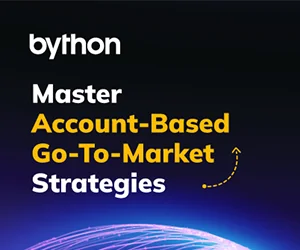Blockchain is an architecture in which data is maintained in blocks that are cryptographically linked to one another. Blockchain, also known as a decentralized or distributed Ledger, supports the concept of decentralization in which everyone has an equal opportunity to own, engage, and progress sans intervention from other entities. In this article let us explore the blockchain trends that are expected to dominate the blockchain industry in 2023.
In many ways, blockchain marks the next technology revolution – after the rise of the internet, and then social media, which changed the world as we know it. The blockchain database makes it possible to store transactions as well as contracts in connected blocks. Each block is encrypted, timestamped, and unchangeable – making it fully secure despite the absence of a watchdog.
This is a major blockchain trends of our time that 1 in 4 unicorns in Q2 of 2022 was a blockchain company. So, what does the future hold for blockchain? Here are our predictions:
1. Decentralized Autonomous Organizations (DAOs) to gain credibility
In 2023, the shift from conventional organizational structures (such as LLCs) to DAOs would continue to gather momentum even as Web3 trends expand. DAOs enable members from a number of nations to collaborate without the complex documentation associated with establishing a multinational entity or recruiting foreign employees. DAOs are becoming the de facto business model for many of today’s leading decentralized app or dApp developers.
As interest in DAOs continues to rise, an increasing number of businesses are launching services geared at assisting DAO founders. Singapore-based Poko, for instance, assists creators in launching, raising funding, and deploying the DAOs in a relatively short amount of time when compared to the challenges of setting up a new business in an emerging economy.
2. Fewer barriers to entry, thanks to blockchain-as-a-service
The affordability and adaptability of cloud-based services encourage blockchain networks to adopt the as-a-service business model. This enables blockchain developers to quickly build and host blockchain applications and smart contracts, thereby lowering time-to-market.
For businesses, blockchain as a service further eliminates the expense of in-house network development. This allows them to concentrate on enhancing the functionalities, and optimizing their products or services while keeping their network nimble as well as productive via service providers.
NIFTRON, a UK-based firm that develops a blockchain as a service platform, is one example. Together with the company’s software development kit (SDK), it allows enterprises to harness blockchain technology and build applications using plug-and-play modules. In addition, the platform manages user accounts and transactions and enables users to tokenize different data types.
3. Adoption in the public sector to increase
This is one of the biggest blockchain trend. Traditional paper-based systems will likely be replaced by distributed ledger technology (DLT) technologies — a primary use case for governments. The transition to digital data infrastructures has been ongoing for some time, but DLT provides additional benefits that provide greater credibility, openness, and protection via cryptography and validation capabilities.
With the creative use of blockchains, government organizations may quickly enhance constituent communications and management. For instance, blockchain may enhance government document forms submission & processing, and chain-of-custody monitoring.
4. The industry will emphasize environment-friendly use
Blockchain adversely impacts the environment due to its high energy consumption. The majority of modern cryptographic protocols currently have a high energy demand. According to an index provided by the University of Cambridge, Bitcoin mining (a blockchain-based cryptocurrency) is responsible for around 0.5% of global power use – greater than Sweden’s yearly average.
In 2023, carbon offsetting as well as energy-conscious blockchain network architectures, will make the adoption of environmentally friendly blockchains more achievable.
Proof of Stake and other eco-friendly algorithms will aid in the development of greener blockchains. For instance, Ethereum, one of the most popular blockchain networks, will likely implement a Proof of Stake resolution this year.
5. The rise and rise of Central Bank Digital Currencies (CBDC)
CBDCs have the capacity to develop the most compelling breakthroughs in blockchain, which will influence all industry stakeholders. Central Banking Institution Digital Currencies represent digital tokens similar to cryptocurrencies generated by a centralized banking system and connected to a nation’s fiat currency.
While cryptocurrencies are decentralized where their price is pegged to a fiat currency such as the U.S. dollar, CDBC could become the fiat currency, i.e., the central bank’s digital equivalent of banknotes.
In addition, more than 95% of the world’s GDP is investigating CDBC, and 50 nations, notably Jamaica, Nigeria, South Korea, India, Russia, Japan, etc., are currently in the advanced stages of prototype, development, or implementation. Given the market buzz that CDBCs has generated, it would not be incorrect to predict that they will be popular in 2023.
6. Cautious but steady investment in the metaverse
Advertisers, pundits, and tech firms are now discussing Metaverse as a revolutionary force, capable of changing our lives.
While’meta’ refers to beyond, ‘verse’ refers to the cosmos. The Metaverse is an interactive digital universe with enormous economic and social possibilities.
With the advent of blockchain and immersive technologies, including augmented reality (AR) as well as virtual reality (VR), it is now feasible to establish the Metaverse – a decentralized 3D world comprised of several virtual spaces. No one vendor controls the metaverse’s virtual environment, as it is device-agnostic and collaborative. In addition, blockchain-based cryptocurrency and non-fungible tokens (NFTs) will power transactions in the Metaverse.
Despite potential losses, it is still “full swing ahead” with the Metaverse concept. In 2023, we may thus expect a more active, if guarded, presence of major tech firms in the Metaverse.
7. Ricardian contracts emerge as a middle ground between traditional and smart contracts
Ian Grigg originally suggested the concept of a Ricardian contract in 1995. These digital contracts establish the conditions and guidelines for interactions involving two or more parties. These contracts may now be hashed, signed, and stored on the blockchain using blockchain platforms.
Ricardian contracts are legal papers intelligible by humans, which, when consented to and signed by the parties, are transformed into machine-readable contracts that define their objectives and actions. A cryptographic hash is used for signing and validation.
In the future, these Ricardian contracts will likely substitute smart contracts. Why? Since the Ricardian contract binds parties to a contract and performs acts in accordance with the agreement, blockchain transactions are rendered more trustworthy and accessible.
8. Federated blockchain for institutional use
Federated blockchain (AKA consortium blockchain) is just an upgrade to the standard private blockchain. While a single company runs a normal private network and new players need the authorization to view and upload files, a federated blockchain delivers the same functionality but is administered by a coalition of organizations.
Federated blockchains are more centralized than public blockchains but more decentralized than private networks. As a result, it is an appropriate alternative for organizational groups in which decision-making authority is distributed among numerous individuals.
This “hybrid” paradigm offers tremendous scalability and allows simple and efficient collaboration. Additionally, it is more secure since all nodes can continually monitor each other. Hyperledger, Corda, as well as Quorum are three major federated blockchains — and more could emerge in 2023.
Overall, one can expect a bullish market environment for blockchain trends in 2023. Investors could tighten their purse strings for certain use cases, but others – like blockchain-based finance and enterprise applications – will continue to thrive. Amid this complex backdrop, it is also important to be aware of the not-so-positive trends in blockchain-based currency, which will also influence the industry in the upcoming months, and navigate them successfully.




